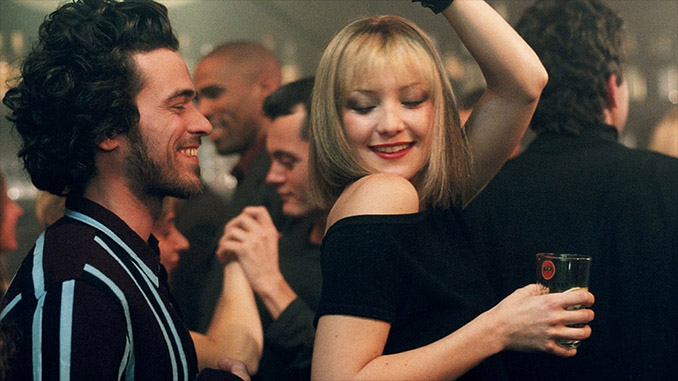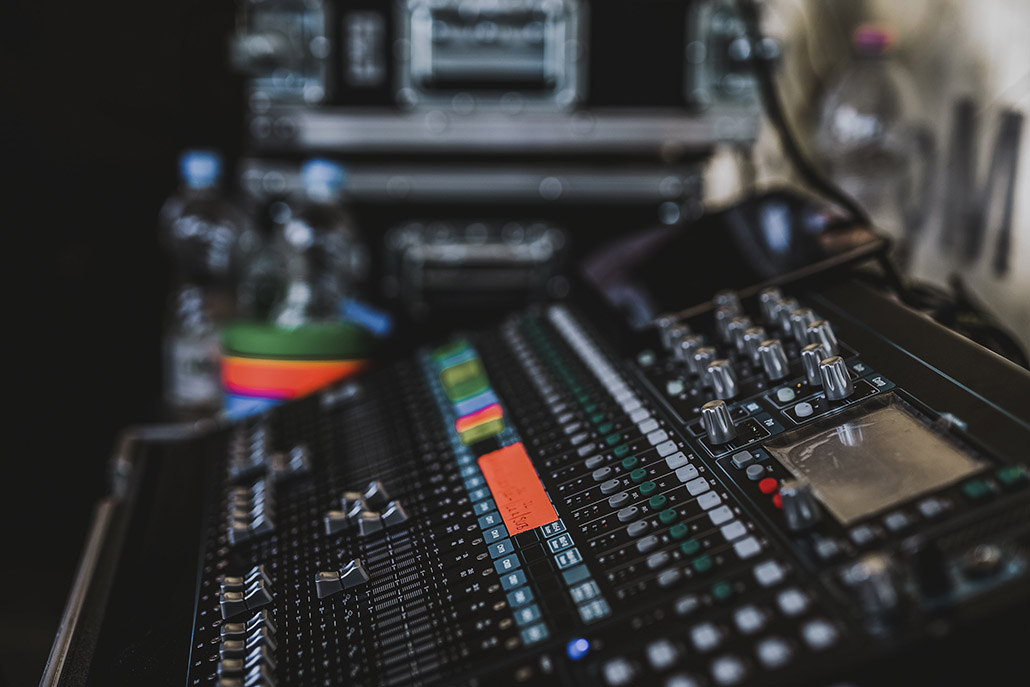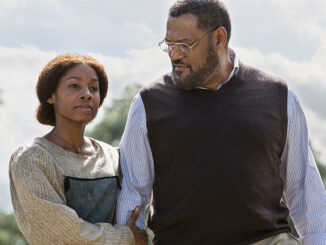
I recently traveled to Paris to mix Le Divorce, the newest film by James Ivory and Ishmail Merchant, the directing/producing pair best known for A Room With a View, Howard’s End and Remains of the Day.
Jim is an American who fell in love with Paris over 50 years ago, as have so many other Americans, as have I. He now lives part-time in Paris not far from where Le Divorce takes place, in the Seventh Arrondissement (district). The story is about an American girl, played by Naomi Watts, who falls in love with and marries a young Frenchman (Melvil Poupaud). Her younger sister (Kate Hudson) arrives to discover that they are getting divorced. The picture will be released in the U.S. in August.
It seemed logical to Jim that we mix the film in France since that’s where the story takes place. But as I soon found out, visiting a place and working there are two very different things.
Getting Started
My first day at work was very exciting. I grew up in Los Angeles where taking the subway was something I saw only in movies — and it usually involved a mugging or hijacking. I had done my homework and figured out my route on the RER Line A commuter train from Châtelet Les Halles. But once I was on the platform, things became more complicated. I saw a wall of human bodies standing four or five deep. The train would pull up, full, people would push and shove to get off, then those few close enough would push and shove their way into the few crevices left. After several trains had come and gone I worked my way up to the edge of the platform. A train arrived and suddenly I felt a force from behind shoving me on. As I found out later, they have people on the platform whose only job is to stuff as many people into the cars as possible … and … hey wait a minute, they were pushing me!! People from L.A. don’t ever touch or push each other, unless they’re friends — or enemies. Once I was on the car, the doors wouldn’t close and we waited. The car reeked of garlic breath and body odor. I heard a muffled announcement that made no sense. Then suddenly I was being pushed off the train by the people who had just been stuffed in. It seems that a “problème technique” had brought the line to a standstill and everyone was beating a hasty retreat for the exit. It was impressive to see what seemed like a thousand people all rush to get on the few escalators and out to the street. It was a sea of people, a human traffic jam and I was swept up into it. I felt like I was on some crazy roller coaster where you’re in constant danger of getting your feet stepped on.

After more squeezing and pushing, I finally reached the doors of S.I.S. (Société Industrielle de Sonorisation — one of the France’s leading post production facilities). Sweaty and out of breath, I was ready to start the day’s work. The stage we were on, Room D, was much smaller than I was used to. (I came to jokingly refer to it as Stage C — for closet.) But I tried to put aside my American prejudice for BIG and get with the French thing — small and cozy. The room was equipped with an AMS Neve DFC that had places for two mixers. I was to be the only mixer, but I had an assistant, Jean-Alexandre Villemer. This is standard practice in France. Jean-Alex knew the console very well, and we were up and mixing after only an hour of set up. Once Jean-Alex’s work was done, and I was busy mixing, it was time for him to relax a bit. I smelled a once-familiar acrid odor in the room … wait a minute, somebody’s smoking a cigarette in here. Could that be? And I turned around to see Jean-Alex looking content in a big cloud of smoke. Okay, it’s France. They smoke here. And almost at the same time he must’ve realized, wait a minute, he’s from California. They sue people for smoking there! He asked if I wanted him to stop, but I said no. Time to put my American prejudices aside.
Before I left L.A., S.I.S. had called me to work out a few things. They informed me that the workday at their studio started at 10 a.m. and finished at 7 p.m. No problem! And … there would always be an hour for lunch. Great! So when we got to lunch time I started salivating, thinking about what was in store for me. I wasn’t disappointed. The studio has its own little restaurant, a common practice for businesses in France. I think the company provides lunch to some of the staff as part of their deal, but more important, the French look at proximity to good food as an inalienable right. There were several long tables set up in anticipation of the people who would arrive. Each film had its own table, and the workers took their places there like at a family dinner. Since there were four or five films working at the same time, the restaurant quickly filled up with the sound of talking and laughing and the clinking of silverware and glasses. It was great to be able to spend time with people from different departments, whom I normally don’t see when working in the U.S. It was also a great way to encounter other people from the film community. The meals were cooked to a high standard and the menu varied daily. We were served an appetizer, main course, dessert and coffee for about $12. You didn’t have to order all of that of course, and some days I would just have an omelette (with frites, naturally!). I was surprised to see that few people drank wine with lunch — they told me this was a thing of the past. But I was pleased to see how everyone ate with such gusto. No one here was on a diet! When we were finished we all lined up at the cash register and told Nino the bar man what we had ordered — the honor system. Then after no more than an hour and a half, it was back to mixing.

Technical Issues
There was some discussion before I arrived about what we would actually record onto. The Tascam MMR-8, the standard hard disk recorder in the U.S., is virtually non-existent in France. They typically use the Sony DASH machine, which is a multi-track digital tape recorder. This in itself was a surprise — I haven’t recorded on tape (or film) for over three years. We also had the option of using the hard disk system recorder commonly found in France, the Akai DD-1500. It is a rock-solid piece of equipment, but getting old and falling into disfavor, and it doesn’t record in 24-bit mode. They are now moving over to the Pyramix hard disk recorder/editor, which can record up to 48 tracks of 24-bit audio. We tried one, but had a few problems on the record side, so we went back to the Sony.
Upon my arrival, I met the sound editors, Katia Boutin, who cut the effects, and Alain Feat, who cut the dialogue. I asked to see the cue sheets so that I could lay out the console and immediately discovered that there were none! In France the mixer looks at a computer monitor placed somewhere near the console and also relies on the sound editor to tell him where things are. I found this very frustrating because it involves a lot of squinting and neck turning. Also, with Pro Tools you have to keep scrolling and resizing to see where you are. I couldn’t reach the keyboard/mouse, so I would ask the editor where a sound began, he would scroll and find it, then tell me. Only then could I start to wind. It was hard for me to believe that they’d never heard of cue sheets, but I realized that it’s a throwback to the past when they had an advanced and unique system of lights under the screen that alerted the mixer to sounds that were about to pass over the playback head (Ryder sound once used a similar system). Once mag disappeared, so did the system, and nothing took its place.
The dialogue was cut on Pro Tools and had been recorded on DEVA, which meant that instead of one or two tracks, we had four for each cut. But Alain meticulously went through and eliminated any unusable material and thus made my life four times easier! I found it interesting that like many software programs, Pro Tools was not translated into French. We referred to “Le Session” for session instead of “Le Séance” which would be the literal French translation. We also had le compressor, le beep, le start mark, and of course, le Dolby!
I premixed the dialogue over a period of two weeks, and then we began the final. It is customary in France to deliver the sound effects and backgrounds directly to the mix through the sound editor’s workstation, without pre-mixing. The motion controller they used was the MCS, the one supplied with the AMS console. I’m quite used to the ballistics of the controllers I find in the U.S., but I could never quite get used to this one, always overshooting the mark. So I ended up going back and forth at regular speed, like the French do.

The Final
We final mixed at the pace of one double reel per day. Jim sat directly behind me in his chair, the composer slouched in an easy chair to one side, and the editors scurried from one side of the console to the other since the various workstations were scattered around the room. The smallness of the room brought everyone very close together and sometimes the way we worked together reminded me of the Keystone Kops.
After a few days of mixing, I wanted to hear how the sound of our room compared with that of their large room, Studio G. We played a reel back and to my dismay, the sound didn’t translate at all. Everyone agreed that the dialogue seemed thinner and sharper in G, not a good way for dialogue to sound. I asked the chief engineer why this was so, but he didn’t seem at all surprised. He told me that you can’t go by G. When I asked him why, he said in French, “Those who work in G love it. They know how to coax the good results from the room.” I wanted to tell him that in the U.S., feelings don’t usually enter into the tuning of a room, but my French mixer friends all told me the same sort of thing. I could imagine them responding, “You Americans put so much stock in your meters and measurements. In France we go by our feelings.” Just to put my mind at ease, we called Francis Perreard from Dolby (“le mec de Dolby” or “the Dolby Guy”) who verified the tuning of our room D. It was right on.
Getting into the Swing of Things
After a week or so in France I started to get into the rhythm. I found my daily commute exhilarating, almost like an Olympic event. But upon my arrival I found myself oddly craving a cigarette. When coming through the doors I prepared for the daily ritual of greeting. I learned that you don’t just say hi and sort of wave your hand to the people you work with. With each and every one you must shake hands and make eye contact, or you did “la bise,” which is to kiss cheeks. Men did this with men as well as women, depending on how well they knew each other. It seemed uncomfortable and a waste of time at first, but I soon started to see it differently. It was a way to acknowledge each one of your colleagues personally, a little moment in time to tell each person that they were important to you. Like eating tripe (which they always offered at lunch), kissing the men was a bit much for me.
It was strange to be in France for Thanksgiving. No mention of our great American tradition was made anywhere. It was a normal workday and the restaurant didn’t even offer turkey. I mentioned this to Nino and he seemed very sad that he had missed the opportunity for a party. No matter, out came the bottles of champagne and everyone in the restaurant toasted to “le thanksgiving américain.” I was reminded by one of my French co-workers that I had wanted to work on the second Monday after I arrived, which turned out to be Armistice day (Veteran’s Day). My friend pointed out that it may not be a major holiday for Americans anymore, but it was the day that honored the men and women who died in World War I, a million and a half of whom were French. We didn’t work on that day.
I asked to see the cue sheets so that I could lay out the console and immediately discovered that there were none!
I had heard a great deal about the French gift for Foley or “bruitage” which literally means “the making of noise.” I visited our Foley session at Les Auditoriums de Boulogne about a half hour from S.I.S. The Foley artist, Nicolas Becker, and mixer, Anne Le Campion, were hard at work on a Saturday. I wondered if, just as it is with McDonald’s, American habits were slowly taking over their culture. Nicholas worked with an assistant and they often did three or four different cues at once. This resulted in a maximum of eight tracks of Foley — unheard of in the U.S. nowadays. Anne carefully worked with the miking and the acoustic panels in the room, trying to simulate the live sound of the original performance. They do this with ADR, as well, sometimes using a boom man in the sessions to continuously vary the distance from actor to mike, depending on the shot’s perspective. The Foley was excellent, almost like music, and I rarely added any reverb to it.
I didn’t see much evidence of union activity when I was there. All mixers are freelance, but all other studio personnel are staff. When we finally had to work on Saturday, Jean-Alex accepted it, but with little enthusiasm. I told him to think about all the money he would be making. He said he wasn’t really interested in that. He preferred to spend time with his family. But he also told me that he was hired on contract for a fixed number of hours for the entire year. Any hours in addition would be paid at a premium — the following March. A nice check when it arrives, but hard to connect with the day we worked.
When it was time to leave, Jean-Alex shook my hand and practically had tears in his eyes. “Tu est le top,” he told me, which I took as high praise. I put on my overcoat, gloves and hat, and prepared for my last ride home on the RER.





